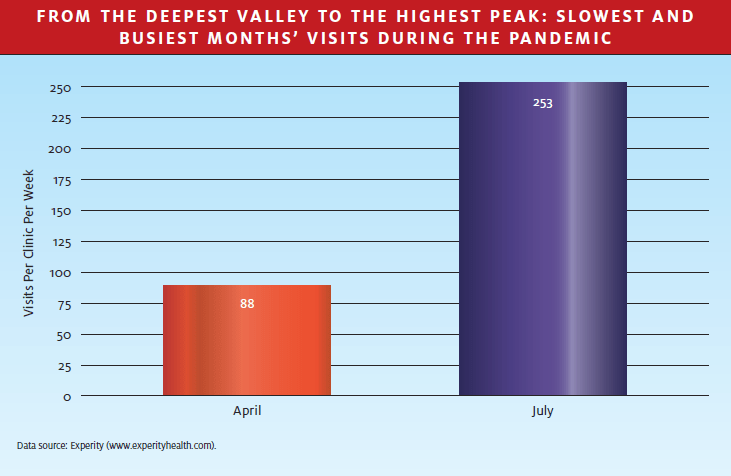If you worked in an urgent care center located anywhere but a major urban hotspot at the outset of the COVID-19 pandemic, it’s likely your business suffered. You may have even seen your team diminished or your business (we hope temporarily) closed.
It didn’t have to be that way.
Between testing patients for COVID-19 and treating others for whom there was no room at the emergency room, it should have been a shining moment for our industry. Instead, essential testing supplies went elsewhere—a situation that has since been rectified—and patients who needed nonemergent care were too needlessly afraid of infection to visit their local urgent care center.
Thanks to perseverance, public education, and an ever-evolving sense of how to respond, however, urgent care is surging again. According to data from Experity, based on their client base of more than 5,700 clinics, average visits per center per week grew more than two-and-a-half fold from their nadir in April to their zenith in July. (See the graph below.)
With predictions that the U.S. case load will start creeping up in the fall, urgent care appears to be on surer footing to both weather the crisis and help the healthcare system manage, saving lives (and businesses) in the process.

